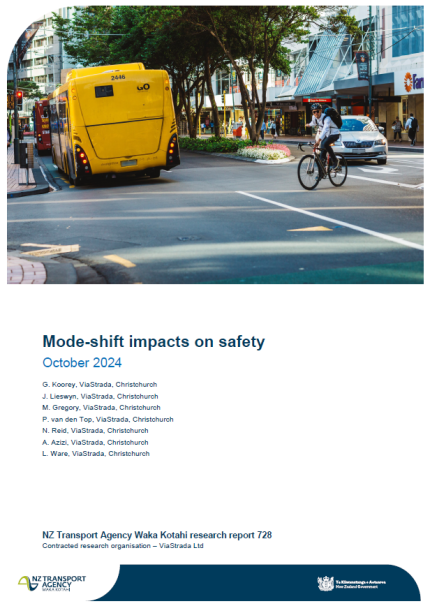Published: October 2024 | Category: Healthy and safe people , Research programme , Research & reports | Audience: General
This study examined the available research on the impact that shifting travel modes – from private motor vehicles to public transport, active travel modes and micro-mobility– can have on crash rates, and developed a model to enable different mode-shift scenarios to be tested.
The study found that, while the majority of the risk factors associated with the various travel modes had been studied individually, most of these studies had only looked at a few modes and did not explore the multiple interactive relationships that can exist between them.
The Excel-based model developed enables the impact of changes in the overall vehicle-kilometres travelled, mode share, and different walking and cycling network levels of service to be tested. However, the authors caution that the model only predicts changes in distance-based risks and casualty rates. Because travellers often reduce how far they travel in total when they shift modes – for example, walking or cycling to the local shops rather than driving across town to a shopping centre – the model is likely to significantly underestimate the reductions in crash casualties per capita that shifting modes will have. In practice, policies and programmes that encourage shifts from driving to active transport modes are likely to reduce total crash injuries and deaths much more than the results of the model indicate.
In developing the model, the study collated recent New Zealand Police data about road transport crashes, Ministry of Health hospital admission and ACC data. However, the authors also recognised that this data was inadequate, for example in significantly under-reporting crashes that cause less serious injuries or that don’t involve motor vehicles, and the report’s recommendations include several aimed at improving data collection and analysis.
Keywords:
elasticity; household travel; mode shift; safety; safety impact; travel modes
Authors:
